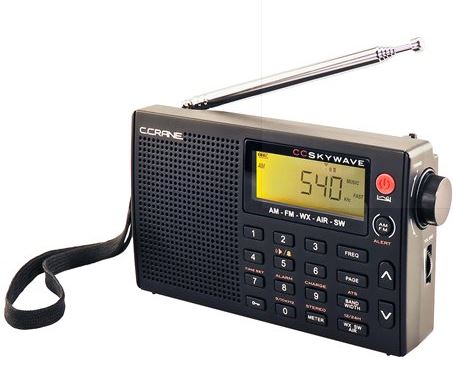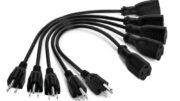Hey, remember AM radio? If course you do. AM radio isn’t exactly on the cutting edge of technology anymore, but it’s doing surprisingly well for its age. After 100 years, AM radio is still going strong with talk and nonprofit stations. It’s true, until about 50 years ago AM radio was the dominant form of music transmission in this country. FM didn’t supplant it until the 1970s, when listeners demanded better quality than AM could supply. And of course we are all aware of the multiple revolutions in music broadcasting since then. It first became possible to bring your own music, then to get broadcasts from satellite and eventually streaming.
All along, though AM radio has been there. It’s still there now. It’s the most reliable, furthest reaching form of broadcasting. Some AM stations can be heard several states away. But it does seem like something of a relic, even among other broadcast services. Why is that?
Looking back
AM radio broadcasting in the United States started in 1920 with the first commercial license. Until the end of the second World War, radio was synonymous with commercial broadcasting. AM broadcasting evolved from wireless telegraphy which had been used in ships for several years. The technology itself had been improving for decades before its use in commercial broadcasting.
AM radio in the US uses frequencies from 530kHz to 1610kHz, or in other words .5 to 1.6MHz. Compare that to FM radio at 88-108MHz, television which ends at 600MHz, cellular communication which goes up to 2,100MHz, and satellite transmissions that start at 12,000MHz. When looked at that way, AM radio is pretty low on the broadcast spectrum. But thought of from the point of view of its inventors, it’s actually pretty high.
Understanding the tech
In order to understand why AM radio is on such a low broadcast range, you need to understand the tech as it existed at the time. Electricity itself was very new. It was hard to make and harder to control. The idea of modulating a signal onto an electrical current was really high tech 100 years ago.
Being able to change the frequency of an electrical signal took a lot of work and being able to do it precisely was even harder. In the US, electrical signals travel with a frequency of 60Hz, or 60 times per second. It was clear that an audio signal would need to be much higher than that, for several reasons.
Sample rate
The first thing that radio scientists began to understand was what we would call sample rate. Today when we listen to digital music, we realize that higher sample rates mean more quality. This same idea translates loosely to the idea of analog AM broadcasting. In order to get acceptable quality (by 1920s standards), you need a frequency range of about 20kHz. So, having radio broadcasting starting at 60Hz wouldn’t make any sense. You need a range that gives you room to broadcast a high-quality signal.
Power usage
It takes more power to generate a high-frequency signal than a low one. This is one of those common sense things you can try yourself. Try tapping a table once a minute. Then try tapping it ten times a minute. Then try tapping it 60 times a minute. If you’re really good, maybe you can try tapping it 240 times a minute. It’s a lot harder to make yourself go that fast, and it takes more energy.
This is true with radio broadcasting as well. So, from the point of view of broadcasters in the 1920s, you would want that frequency to be as low as you could make it, because making a massive amount of power is hard.
It was later discovered that lower frequency signals generally travel further than higher frequency ones of the same output power. This isn’t always true, and it has to do with the way the signal travels through the air. But it comes down to finding a sweet spot where you can generate enough power to get the signal as far as you want.
Why not move AM radio?
The AM radio frequency bands have been fixed for 100 years. Rather than move them for no reason, FM bands were opened up. FM broadcasting takes advantage of a wider range of frequencies to offer better sound quality and stereo. In recent years, parts of the FM bands have been used for digital versions of the AM signal. This is how HD radio works.
Over the decades there have been proposals to end AM broadcasting altogether. Because AM is part of the national civil defense plan, they have never amounted to much. That’s right, if there were some sort of national emergency, the government would still use AM radio to broadcast out critical information.
The biggest reason not to move AM radio is that frankly, there isn’t anything else that would go into that frequency range. You couldn’t use it for television or even cell phone use. It’s just not a very big chunk of frequencies. Keep in mind too that the lower the frequency, the larger the antenna needs to be. AM antennas tend to be very small because there isn’t much signal to catch and it’s not very complex. But if you were to move cellular data down to that level you’d need a massive antenna to receive it.
There’s still life in AM radio
A proposal was floated several months ago that would allow broadcasters to start broadcasting digital signals on AM instead of analog ones. It’s not clear if broadcasters will actually do this, and it’s also not clear who would would it. But still, it’s an option.
In the meantime, AM radio just keeps on going. You can find a great selection of radios including this C. Crane Skywave when you shop the great selection at Solid Signal!





